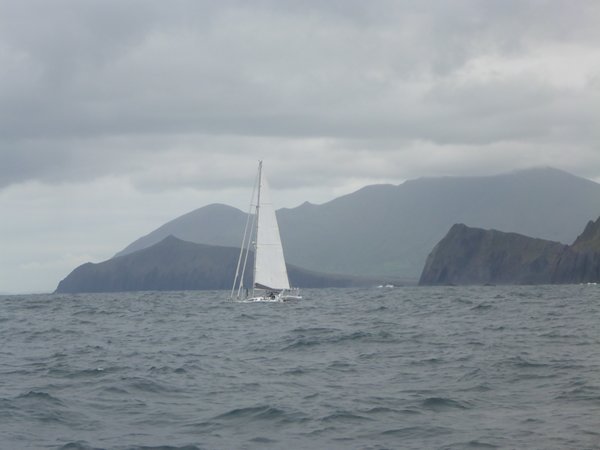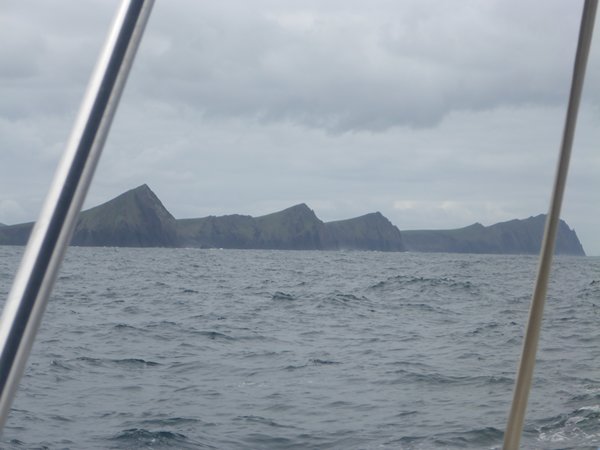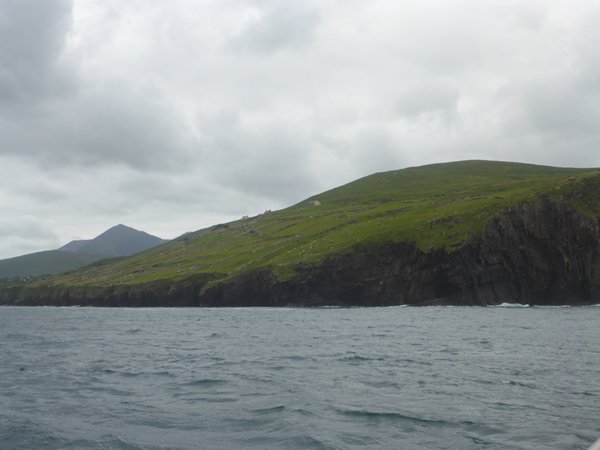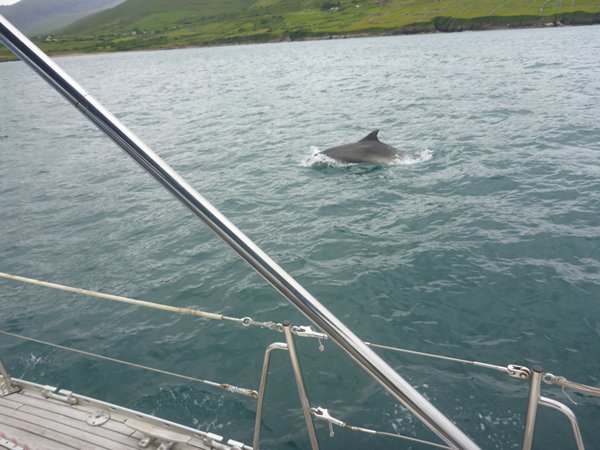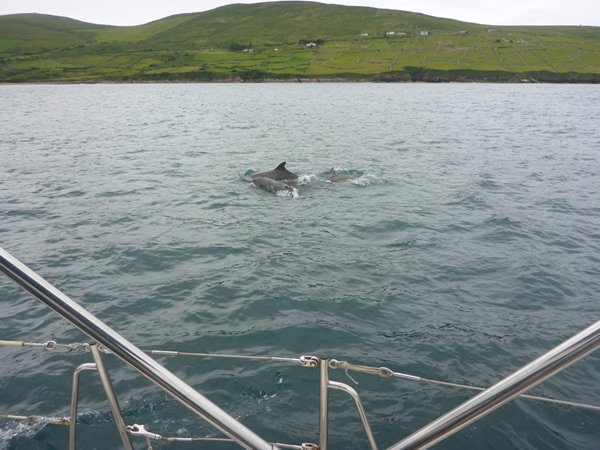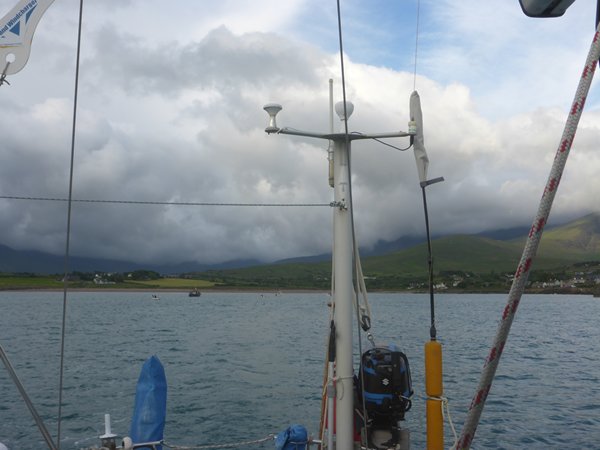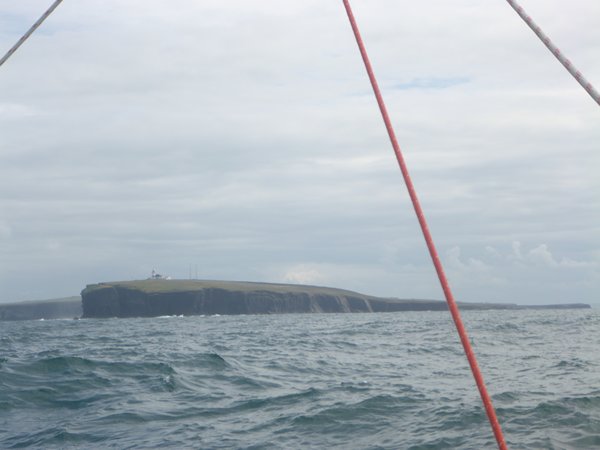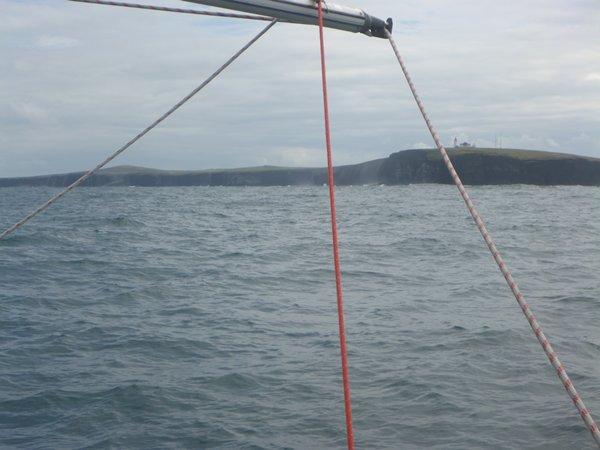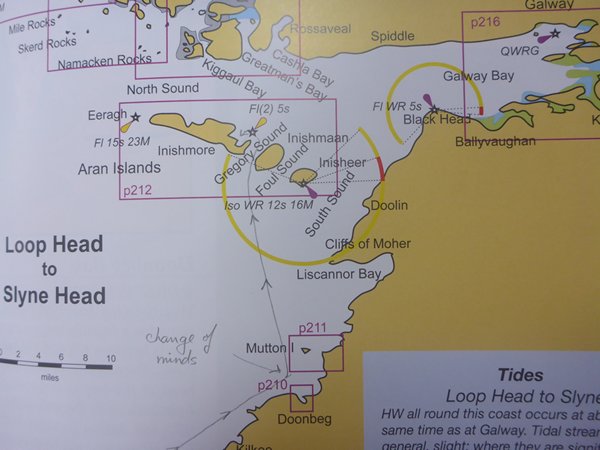The Challenge of Blasket Sound

The Challenge of Blasket Sound
I was a little trepidatious about negotiating Blasket Sound. Pilot books naturally point out the obvious dangers of rocks and submarine rock ledges, strong tides, rip currents and wind effects, which has the effect of instilling a healthy respect for the dangers in the area, but their precise descriptions of how to deal with these same challenges are a very useful way of preparing oneself in the hours and days beforehand. When under passage we have at least one pilot book open and the Cruising Association Almanac on hand to cross reference.
But I have discovered much of my ‘fear’ is in the anticipation and my imagination running a little wild.
As we approached the area from the right in the diagram I was actually looking forward to the challenge. Rob had done his usual good job of putting waypoints onto the chartplotter and I was able to safely round of the corner as we turned onto the given transit line crossing Clogher rock to Sybil Point. On the Point the transit had to touch the inner of the two peaks.
Conditions were good, visibility fine, wind light and tide with us. And when in the area we realised all we had to do was pass Connor Rocks and we could bear away to clear the rocks lying off Sybil Point, job done. A French yacht came along behind us, and overtook on a different course.
There is a beautiful beach and a sheltered anchorage on Great Blasket which would have been a fine place to stay if it wasn’t for the changeable weather. So far, and we are now approaching midsummer, there have been no fine sailing spells longer than about two days, with persistent big Low-Pressure systems bouncing across the North Atlantic biffing and squeezing the Highs out of the way. A little bird said that July would be better but we shall see.
The sea state along the north coast of the Dingle Peninsula was disturbed as the 2-3 metre Atlantic swell rolled in to the cliffs at an angle and then bounced back seaward again. There was not enough wind to fill the sails sufficiently to overcome Zoonie’s rolling in the bumpy water. I was feeling a little off my best so oddly I decided to make some rock cakes which turned out well considering.
We were heading for Brandon Bay, a big open bay which offered shelter from the westerly we were experiencing, where we could anchor in mud NE of the quay. We didn’t plan to go ashore so could remain in a good depth of water.
So much of the sheer pleasure of cruising comes from the unexpected and as we rounded the headland into the bay we were met by an extended family of very friendly common bullnosed dolphin which was a pure joy. They all came along, even two tiny pale grey babies that looked as if they were glued to their mums. These are big dolphins, the ones we saw around 8 to 10 feet long. Despite their size they are as agile as the little common dolphin and uplifted our spirits even more than the relief of finally dropping the Delta anchor and being able to STOP! We had covered 32 miles through the sound and along the north coast but where we anchored was a mere 12 miles from Dingle, south as the crow flies from Zoonie.
We passed a very peaceful night there. Next morning as we left dark and threatening clouds were hovering over the mountains south of us but it was blue out to sea. We were heading across the Shannon Estuary towards Loop Head and then along the coast to a small natural harbour, Doonbeg. We had been hoping for a sail, the concern of motoring with the fuel prices rising as quickly as the winds in a storm was in the back of our minds, but the conditions once again were against us.
By the time we were in the vicinity of Doonbeg it was around 4.30 pm. Contrary to the shelter we hoped we would get out of the swell in this little anchorage we could see that the swell was in fact bowling straight into the harbour so simultaneously we both agreed we would turn northwards towards the Aran Islands, pass through Gregory Sound and pick up a free mooring buoy in Killeany Bay just outside Kilronan Harbour on the biggest Aran Island, Inishmore. Another 20 or so miles and four hours but the day lit evenings are wonderfully long, it is still light at 10.30 pm.
Yet again, at the end of a long uncomfortable day the unexpected arrived on deck. Our change in course meant Zoonie was much happier with the sea-state and her position relative to the swell, the wind increased because we were no longer running before it and with the genoa out fully and a little mainsail she was on a beam reach and loving it, and so were we. The skies were grey and dismal but her progress was sweet.
Three and a half hours later we were passing along Gregory sound in the company of little common dolphins and in awe of what appeared to be fields of bald, flat limestone rock surrounded by dry stone walls on Innishmaan. Did they once have soil that has since eroded and been blown away, I wondered?
These Irish Islands, including the Blaskets and Aran Islands are amazing culturally. They have produced many poets, writers, artists and dancers over the years, inspired as they must be by living on the outermost fringe of humanity in the most beautiful, raw, rugged and natural environments. Visitors in growing numbers now come to touch briefly upon this rich vein of Gaelic culture and natural wonders, us amongst them.
But we are so fortunate in that Zoonie is enabling us to see the natural beauty from the sea as well as our sorties ashore. To the south in the distance are the famous cliffs of Moher to which people pay to be shipped out in small boats to gaze up at their grandeur and sheer height (literally), but for us having gazed upon the entire coast from the south they are a tiny part of the wild and spectacular Atlantic west coast of Ireland.
